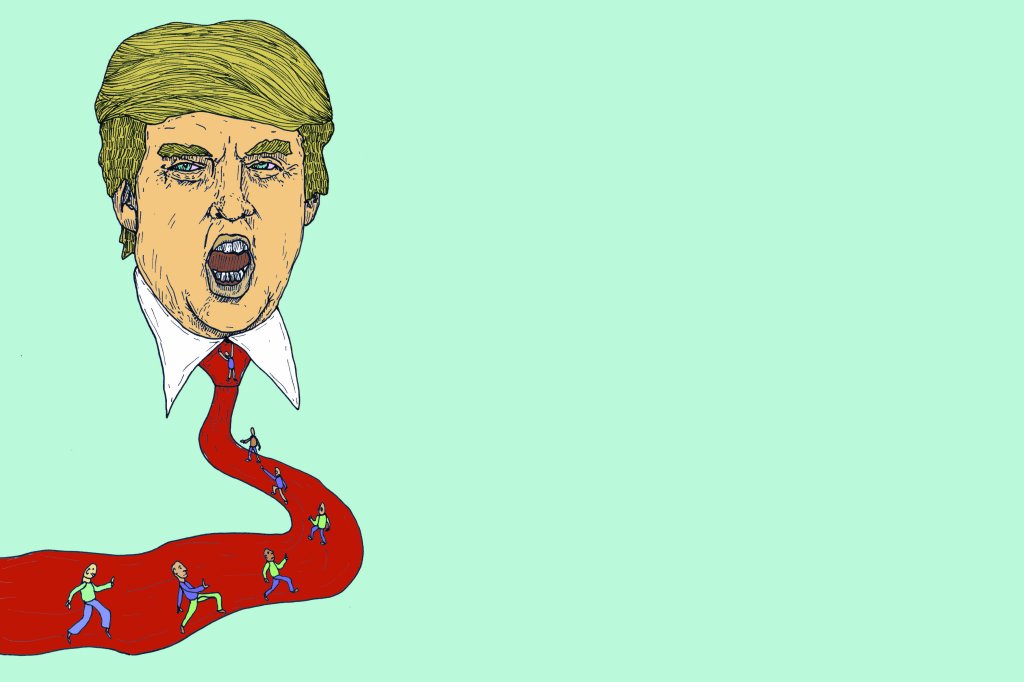Politics is all about marginal gains. As Newton’s third law states: for every action, there is an equal and opposite reaction. With the limelight cast firmly on the political sphere, it comes as no surprise that politicians are constantly seeking innovative ways to get themselves to the top of the pecking order. Wearing a decent tie can transform the most appalling pompous dullard; as Sir Nicholas Soames said of Jacob Rees Mogg, “[he’s an] absolute fraud, a living example of what a moderately cut double-breasted suit and a decent tie can do with an ultra posh voice and a bit of ginger stuck up his arse”.
As is clear from the Moggster, politicians with aspirations of high office are very deliberate about their choice of necktie. And yet this staple feature of political and corporate attire, the necktie, also known as a cravat, seldom pops into one’s head when thinking about the ways politicians attempt to woo both their colleagues and voters. Unbeknownst to many, tie choice in politics is by no means random, with science and context both pivotal factors in determining a statesman’s choice of necktie.
Generally in the political realm you will find there are two predominant colour choices of neckties: red and blue. During President Obama’s first 11 days in office, he was seen donning exclusively red and blue ties; here, he was subliminally communicating to the American public that he was an inclusive President – red is the colour of Republicans and blue the colour of the Democrats. Obama and his partner in crime, Joe Biden, often colour coordinated their tie choices during their time in office, with one wearing red on one day and swapping for blue the next. This is no coincidence. For one, Red has long been associated with love. Studies have found that women donning red garments make men feel more amorous towards them. In sports, red-wearing teams have tended to outperform their opponents, partly due to officials cutting athletes clad in red more slack. Red has also been found to be the most effective colour in boosting our attention to detail, and with attention being highly sought after in politics, no wonder it’s a colour sported by many an aspirational legislator. Blue, on the other hand, espouses a more creative and welcoming tone, traits of which appeal to voters in equal measure.
President Trump is possibly the most well-known advocate of the red necktie. With context in mind, the red necktie rose to prominence in the 1980s, an era defined by corporate upsurge, and came to be a major power symbol. Trump, of course, is a defining remnant from that decade, his red neckties paying homage to an era of free market dominance. He is pure red republican – not an Obamaesque uniting figure. Political cartoonists rarely depict Trump without his signature red tie, the length of which tends to be rather excessive. It has even been suggested that Trump’s long ties are a way of ‘overcompensating’, if you catch my drift. Conjecture or not, one thing is clear, that Trump’s choice of tie is a statement of intent. He is a man who wants to be seen as authoritative and powerful, his choice of tie a fitting reminder of these goals.
Since the dawn of the media age, however, politicians have become more mindful of the consequences of being seen wearing certain coloured ties. In Britain, purple ties are now in vogue, as the more traditional party colours of red and blue have become increasingly sidelined. Rigid political dogmatism is perceived through a variety of guises, clothing being one of them. In Britain and the US, purple is regarded as a non-partisan colour in politics, since it is a combination of both red and blue. Former Prime Ministers Gordon Brown and David Cameron both opted for purple ties during the leadership debates in 2010 in a bid to appear more all-embracing. It would appear that the days of wearing one’s political party’s official colours are becoming increasingly anachronistic as the purple tie phenomenon is gaining evermore traction, excepting Trump.
Yet why not go even further and not wear a tie at all? This has been a tactic deployed by an increasing number of high profile politicians in recent years. Political leaders have picked up on the consensus felt by many ordinary people that they feel disconnected from what is going on in the political domain. Consequently the necktie is no longer thought of as being an essential part of a politician’s uniform. Tammy Haddad, a Washington media consultant and former political director of MSNBC, believes this gesture to be “an overt expression…to make politics more human”. The incumbent Mayor of London, Sadiq Khan, took his oath of office in Southwark Cathedral without wearing a tie, while one of David Cameron’s nicknames is ‘dress-down-Dave’ due to the regularity of Cameron being seen without wearing a tie during his time as PM.
And then there is President Putin…
Written by Joe Tomsett

Leave a comment